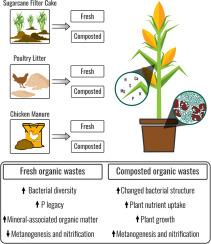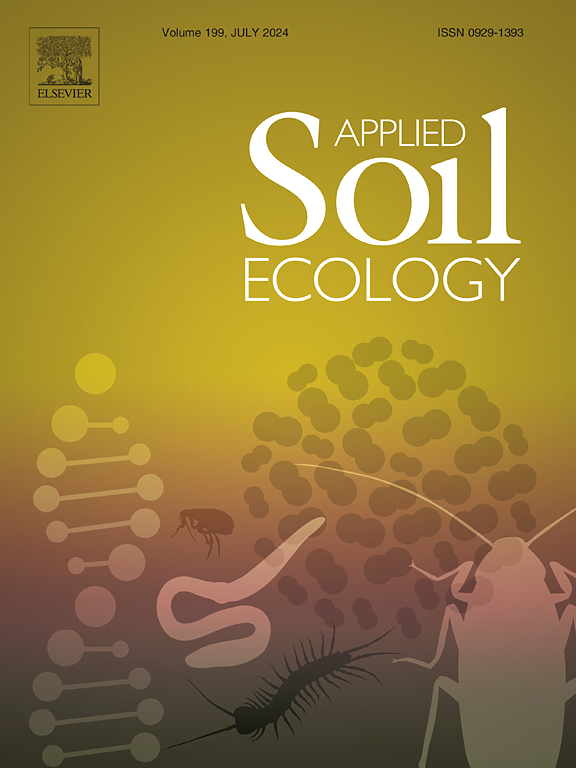Differential effects of fresh and composted organic wastes on soil bacterial community and maize growth
IF 5
2区 农林科学
Q1 SOIL SCIENCE
引用次数: 0
Abstract
The use of organic waste in agriculture improves soil health although its interaction with mineral fertilizers is not fully understood. This study investigated the impact of combining mineral fertilizers with organic wastes, such as sugarcane filter cake, poultry litter, and chicken manure in both fresh and composted forms, on maize (Zea mays) growth, soil bacterial communities, and their potential metabolic functions. The assessment was conducted 90 days post-application on two different soil types (i.e., clay and sandy clay loam) in a greenhouse setting. While fresh animal-derived organic wastes generally boost short-term plant growth and nutrient uptake, composted wastes can be more effective in reducing nitrogen losses and methane emissions over the long term. The impact of organic waste on soil microbial communities and functions varies, with fresh wastes increasing nitrification and methanogenesis, while composted wastes tend to stabilize carbon and reduce these processes. Evaluating different organic waste sources and forms, and considering their C:N ratios, is crucial for optimizing soil health and minimizing greenhouse gas emissions. They also boosted plant growth and nutrient uptake, whereas composted waste increased soil mineral-associated organic matter (a more stable carbon pool) and phosphorus availability. These findings are crucial for optimizing the synergy between organic wastes and mineral fertilizers to enhance soil productivity and agricultural sustainability.

新鲜有机废物和堆肥有机废物对土壤细菌群落和玉米生长的不同影响
在农业中使用有机废弃物可以改善土壤健康,尽管人们对有机废弃物与矿物肥料的相互作用还不完全了解。本研究调查了矿物肥料与甘蔗滤饼、家禽粪便和鸡粪等新鲜和堆肥形式的有机废物相结合对玉米(玉米)生长、土壤细菌群落及其潜在代谢功能的影响。评估是在温室环境中对两种不同类型的土壤(即粘土和沙质粘壤土)进行的,施用后 90 天进行。新鲜的动物源性有机废弃物通常能促进植物的短期生长和养分吸收,而堆肥后的废弃物则能更有效地减少氮的损失和甲烷的长期排放。有机废弃物对土壤微生物群落和功能的影响各不相同,新鲜废弃物会增加硝化和甲烷生成,而堆肥废弃物则倾向于稳定碳并减少这些过程。评估不同的有机废物来源和形式,并考虑它们的碳氮比,对于优化土壤健康和减少温室气体排放至关重要。它们还能促进植物生长和养分吸收,而堆肥废物则能增加土壤中与矿物相关的有机物(更稳定的碳库)和磷的可用性。这些发现对于优化有机废物和矿物肥料之间的协同作用,提高土壤生产力和农业可持续性至关重要。
本文章由计算机程序翻译,如有差异,请以英文原文为准。
求助全文
约1分钟内获得全文
求助全文
来源期刊

Applied Soil Ecology
农林科学-土壤科学
CiteScore
9.70
自引率
4.20%
发文量
363
审稿时长
5.3 months
期刊介绍:
Applied Soil Ecology addresses the role of soil organisms and their interactions in relation to: sustainability and productivity, nutrient cycling and other soil processes, the maintenance of soil functions, the impact of human activities on soil ecosystems and bio(techno)logical control of soil-inhabiting pests, diseases and weeds.
 求助内容:
求助内容: 应助结果提醒方式:
应助结果提醒方式:


